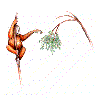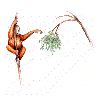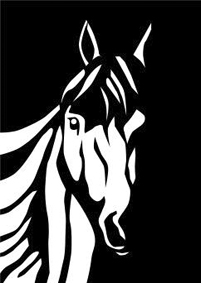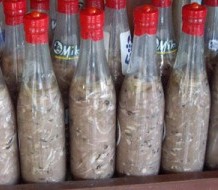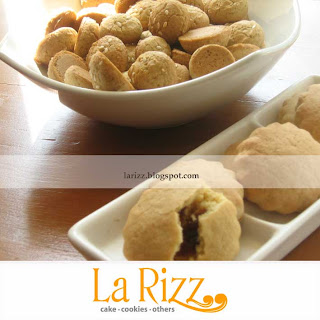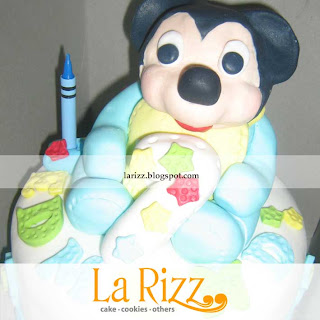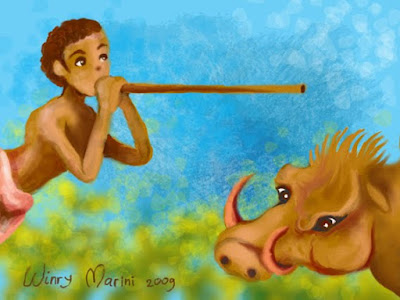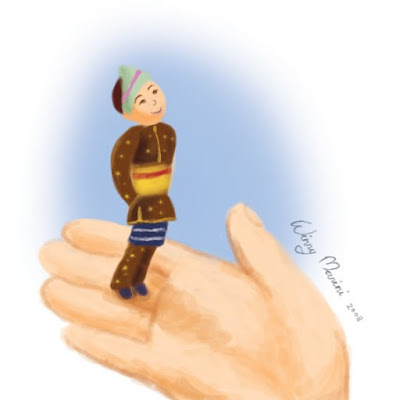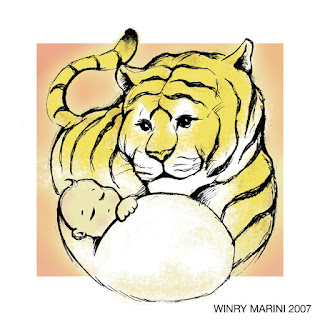Peranakan
From Wikipedia, the free encyclopedia
Peranakan and Baba-Nyonya are terms used for the descendants of late
18th Century Chinese immigrants to the Nusantara region during the Colonial
era, especially the British Straits Settlements of Malaya and the Dutch-controlled
island of Java and other locations, who have adopted partially or in
full Malay customs in a (chronological adaptation) to be somewhat assimilated
into the local communities. While the term Peranakan is most commonly
used among the ethnic Chinese for those of Chinese descent also known
as Straits Chinese (????; named after the Straits Settlements), there
are also other, comparatively small so-called Peranakan communities,
such as Indian Hindu Peranakans (Chitty), Indian Muslim Peranakans (Jawi
Pekan)(Jawi being the Javanised Arabic script[1]., Pekan a colloquial
contraction of Peranakan.) and Eurasian Peranakans (Kristang.) (Kirstang=
Christians).
Terminology
In both Malay and Indonesian, 'Peranakan' is defined as 'descendant'
with no connotation of the ethnicity of decent unless followed by a subsequent
qualifying noun, such as for example Cina (Chinese), Belanda(Dutch) or
Jepang (Japanese). Peranakan has the implied connotation of referring
to the ancestry of great-grandparents or more distant ancestors.
[Baba|Baba_(honorific]] is a Persian loan-word borrowed by Malaysian
as an honorific solely for grandparents- co-opted to refer to the Straits-Chinese
males. The term originated from Hindustani speakers such as vendors and
traders and become part of common vulgar vernacular. Female descendants
were either called or styled themselves Nyonyas. The word nyonya (also
commonly misspelled nonya) is a Javanese loan honorific word from Dutch
Nona(grandma) meaning: foreign married Madam. The term for Straits-Chinese
addressed as nyonya originated as Javanese at the time had a tendency
to address all foreign women (and perhaps those who appeared foreign)
as nyonya.
Straits-Chinese are defined as those born or living in the Straits
Settlements- a British colonial construct of Penang, Meleka and Singapore
constituted in 1826. Straits-Chinese were not considered Baba Nyonya
unless they displayed certain Sino-Malay syncretic attributes.
Ancestry
Most Peranakan are of Hoklo (Hokkien) ancestry, although a
sizable number are of Teochew or Cantonese descent. Originally, the
Peranakan were part Chinese, part Malay. Baba Nyonoya are a subgroup
within Chinese communities, are the descendants of Sino-indigenous
unions in Melaka and Penang. It was not uncommon for early Chinese
traders to take Malay women of Peninsular Malay or Sumatera as wives
or concubines[11] Consequently the Baba Nyonya possessed a synergistic
mix of Sino-Malay cultural traits.[12][13]
Written records from the 19th and early 20th centuries show that Peranakan
men usually took brides from within the local Peranakan community.
Peranakan families occasionally imported brides from China and sent
their daughters to China to find husbands.
Some sources claim that the early Peranakan inter-married with the
local Malay population; this might derive from the fact that some of
the servants who settled in Bukit Cina who traveled to Malacca with
the Admiral from Yunnan were Muslim Chinese. Other experts, however,
see a general lack of physical resemblance, leading them to believe
that the Peranakan Chinese ethnicity has hardly been diluted. Some
Peranakan distinguish between Peranakan-Baba (those Peranakan with
part Malay ancestry) from Peranakan (those without any Malay ancestry).
Language
The language of the Peranakans, Baba Malay (Bahasa Melayu
Baba), is a dialect of the Malay language (Bahasa Melayu), which contains
many Hokkien words. It is a dying language, and its contemporary use
is mainly limited to members of the older generation. English has now
replaced this as the main language spoken amongst the younger generation.
In Indonesia, young peranakans can still speak their creole language,
its use is limited to informal occasions, young Peranakans occasionally
add up new words (and lose some words) for their own slang. Normally
there is a gap of words between old Peranakans and young Peranakans.
History
In the 15th century, some small city-states of the
Malay Peninsula often paid tribute to various kingdoms such
as those of China and Siam. Close relations with China were
established in the early 15th century during the reign of Parameswara
when Admiral Zheng He (Cheng Ho), a Muslim Chinese, visited
Malacca and Java. According to a legend in 1459 CE, the Emperor
of China sent a princess, Hang Li Po, to the Sultan of Malacca
as a token of appreciation for his tribute. The royalty and
servants who accompanied the princess initially settled in
Bukit Cina and eventually grew into a class of Straits-born
Chinese known as the Peranakan.
Culture
Clothing
The Peranakan retained most of their ethnic and religious
origins (such as ancestor worship), but assimilated the language and
culture of the Malays. The Nyonya's clothing was identical to that
of the native Malay's: baju panjang (long dress), batik sarung (batik
wrap-around skirt) and kerongsang (brooch). Beaded slippers called
Kasut Manek were a hand-made made with much skill and patience: strung,
beaded and sewn onto canvas with tiny faceted glass beads from Bohemia
(present-day Czech Republic). In modern times, glass beads from Japan
are preferred. Traditional kasut manek design often have European floral
subjects, with colors influenced by Peranakan porcelain and batik sarongs.
They were made onto flats or bedroom slippers. But from the 1930s,
modern shapes became popular and heels were added.
In Indonesia, the Peranakans develop their own Kebaya, most notably
'kebaya encim', and developed their own batik patterns, which incorporate
symbols from China.
Religion
Baba Nyonya subscribed to Chinese beliefs: Taoism, Confucianism
and Chinese Buddhism, celebrated the Lunar New Year and the Lantern
Festival, while adopting the customs of the land they settled in, as
well as those of their colonial rulers. There are traces of Portuguese,
Dutch, British, Malay and Indonesian influences in Baba culture.[14]
Food
Ayam buah keluak, a traditional Peranakan dish
From the Malay influence a unique "Nyonya" cuisine has developed
using typical Malay spices. Examples are Chicken Kapitan, a dry chicken
curry, and Inchi Kabin, a Nyonya version of fried chicken.
Marriage
It was not uncommon for early Chinese traders to take Malay
women of Peninsular Malay or Sumatera as wives or concubines Consequently
the Baba Nyonya possessed a synergistic mix of Sino-Malay cultural
traits.
Written records from the 19th and early 20th centuries show that Peranakan
men usually took brides from within the local Peranakan community.
Peranakan families occasionally imported brides from China and sent
their daughters to China to find husbands.
Marriages within the community and of similar stature were the norm.
Wealthy men prefigured to marry a chin choay: or matrilocal marriage
where husband moved in with wife's family.[18]
Proposals of marriage were made by a gift of a pinangan, a 2-tiered
lacquered basket, to the intended bride's parents brought by a go-between
who speaks on behalf of the suitor. Most Peranakans are not Muslim,
and have retained the traditions of ancestor worship of the Chinese,
though some converted to Christianity.
The wedding ceremony of the Peranakan is largely based on Chinese tradition,
and is one of the most colorful wedding ceremonies in Malaysia and
Singapore. At weddings, the Dondang Sayang, a form of extempore rhyming
song in Malay sung and danced by guests at the wedding party, was a
highlight. Someone would begin a romantic theme which was carried on
by others, each taking the floor in turn, dancing in slow gyrations
as they sang. It required quick wit and repartee and often gave rise
to laughter and applause when a particularly clever phrase was sung.
The melodic accents of the Baba-Nonya and their particular turns of
phrase lend to the charm of this performance.
Multichrome enamel porcelain tea tray with a traditional Peranakan "fenghuang"
Museums
Historical and cultural items from the Baba culture are displayed
in cultural establishments on Heeren Street, Jonker Street and other
streets in the same neighborhood in Malacca and in Penang in Malaysia,
and at the Peranakan Museum in Singapore. There one can find museums
displaying furniture, food stuff, and even traditional clothes of the
Baba and Nonya. There are also a small number of "Nyonya" restaurants
in Singapore, Penang, Malacca, Jakarta, Semarang, Surabaya, and the
West. Free weekly street shows featuring Baba performances, and traditional
and pop Chinese cultural performances are found in Jonker Street in
Malacca (Melaka). The shows are part of the night market (pasar malam)
scene, and are usually crowded with shoppers, both local and foreign.
In Indonesia a large population of Peranakans can be found in Tangerang,
West Java.
Current Status
Peranakan culture is disappearing in Malaysia and Singapore.
Without colonial British support for their perceived racial neutrality,
government policies in both countries following independence from the
British have resulted in the assimilation of Peranakans back into mainstream
Chinese culture. In Singapore, the Peranakans are classified as ethnically
Chinese, so they receive formal instruction in Mandarin Chinese as a
second language (in accordance with the "Mother Tongue Policy")
instead of Malay. In Malaysia, the standardization of Malay as Bahasa
Melayu — required for all ethnic groups — has led to a disappearance
of the unique characteristics of Baba Malay.
In Indonesia, the peranakan culture is losing popularity to modern western
culture, but to some degree Peranakans try to retain their language,
cuisines and customs. Young Peranakans still speak their creole language,
although many young women don't wear the kebaya, and marriages normally
follow western culture.
The migration of some Peranakan families, particularly the well-to-do,
has led to a small Peranakan diaspora to neighboring countries, from
Vietnam to Australia. However, these communities are very small, and
with the increasing use of the various languages in their respective
countries, the use of Peranakan Malay or Baba Malay has been diluted.


